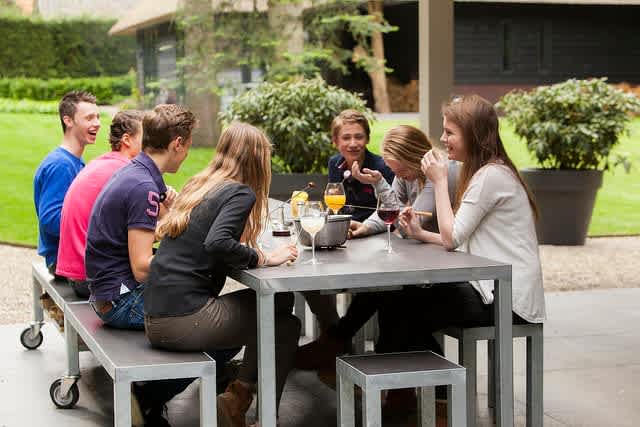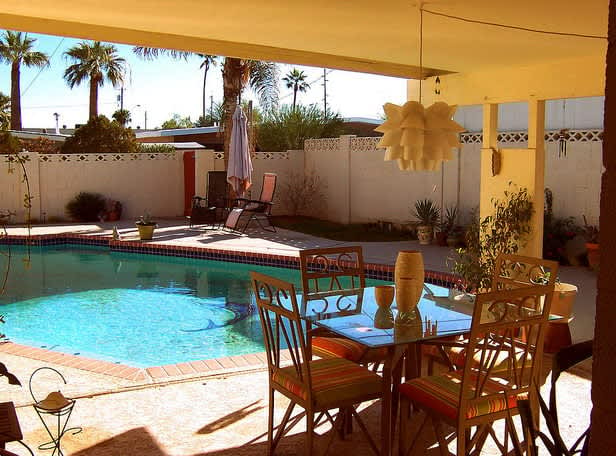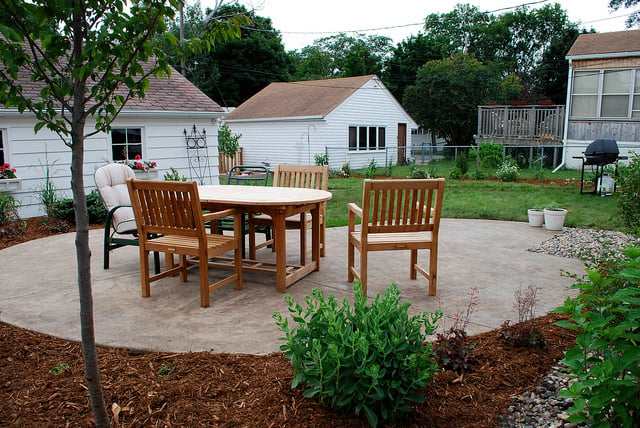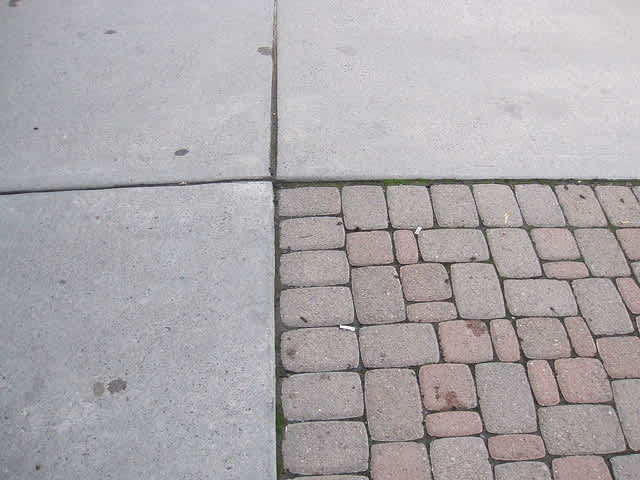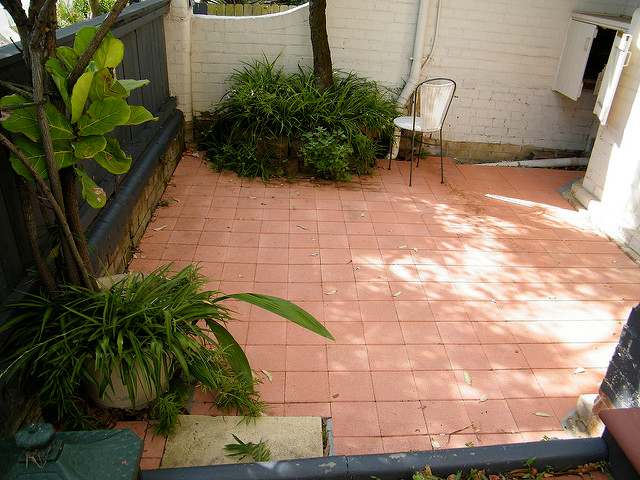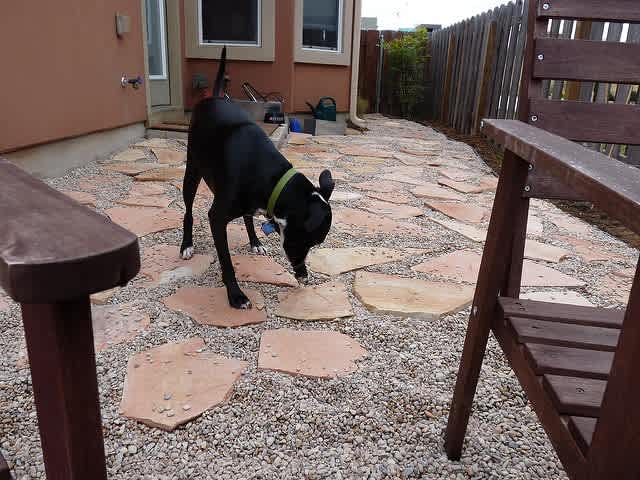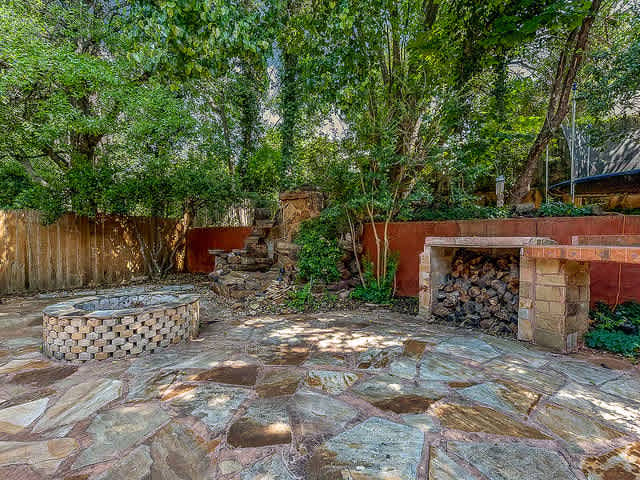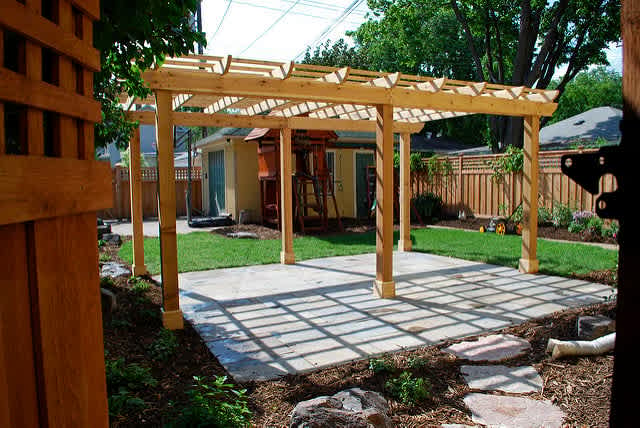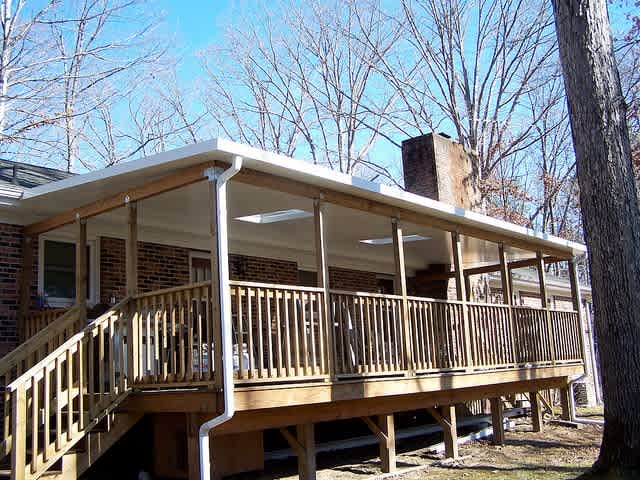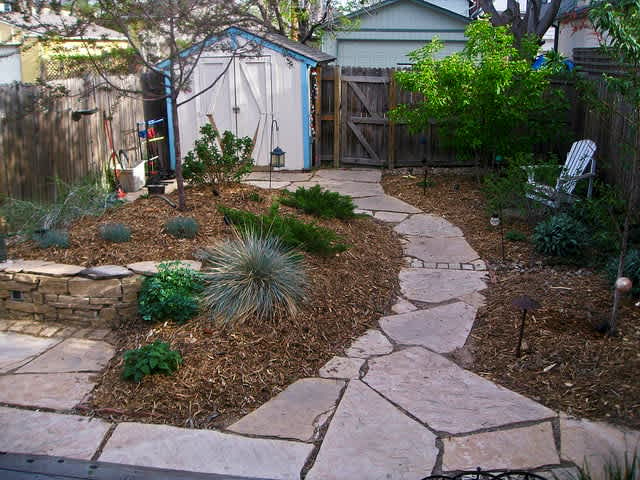Patios provide the outdoor comfort of a living room—perfect for entertaining and relaxing with family and friends! So picking out the material for the surface of your patio is an important decision. What are your first steps? Consider function, surface material, cost, and climate before selecting a reputable professional to design and construct your patio.
Nest Realty’s guide to selecting the ideal patio for your property includes a checklist of questions that will get you thinking about your intended function for your patio, the surface, style, pricing, and more. Figure out the answers to these questions now during the planning stage, and you’re already on your way to constructing your dream patio!
1. Do I have any neighborhood regulations?
Before hiring a reputable professional to construct your patio, check with your local building department on any building codes, zones, or required building permits. Some towns require a submitted copy of plans before building begins. Contact your town building department and figure out next steps, then you’re free to begin the fun part of planning the actual style and design!
2. Why do I want a patio?
Perhaps one of the most popular reasons that many property-owners wish to install a patio is to have a space to entertain family and friends. If you wish to use the space as an entertainment area, consider locating the patio near the kitchen for easily transference of food to the outside dining area. In addition, if entertaining is your main goal, the material of the patio will want to be flat and sturdy. A solid surface will allow a table and benches or chairs to sit securely. In this case, brick, concrete pavers, or slate will be ideal.
If you wish to simply relax outdoors, then any material will do! Consider a material that would allow for installation of a hammock or would be solid enough for chairs.
If you plan to build your patio to hold a hot tub or pool, then locate it off the master bedroom or the main family room or living room. By locating the patio near the family room, the area can act as another sitting area for entertaining and will subsequently widen your living space. When considering materials for areas that include pools and hot tubs, don’t forget about the chemical reactions of the surface materials! Sandstone contains significant quantities of iron in it, so is therefore not compatible with saltwater pools that will cause rust stains. Plus, if you’re planning to landscape around the patio and include flowerbeds with plant fertilizer, research if the plant fertilizer will also cause rust stains. You don’t want to end up paying extra in maintenance costs!
3. What material should I use?
First, your contractor will install the foundation, typically composed of a minimum of 4′′ of a crushed stone or concrete base topped with concrete sand. Next, it’s time for you to select your surface material. You’ll likely want the indoor and outdoor spaces to flow well, so replicating materials and colors for the outdoor patio is tempting. However, consider each type of material individually, as they vary aesthetically, economically, and durability-wise.
The most affordable and durable material is concrete. Talk about a blank slate—concrete can be brushed, stamped, or acid washed. Concrete is great for those on a budget. If you have a creative eye, consider stamped concrete, which can mirror the look of brick or cobblestone, but has slightly higher installation costs. Depending on the color or the finish (dream big—think terra cotta or charcoal style!), the price of concrete installation ranges from $6 to $12 per square foot. Add about $3 per square foot if you choose to install stamped concrete. The bonus of longevity as well as increased stability as an entertaining surface is tempting at such a cost-effective price.
Concrete pavers are similar, but are slightly more expensive. Concrete pavers are adjoining concrete slabs with tabs that fit together to produce a patterned, uniform look. Another perk—concrete pavers have minimal maintenance requirements, so they have long-term durability. You can typically get concrete pavers installed (in no time at all, as they are easy to attach together) for $7-$15 per square foot.
Brick patios are clay-based and as classic as they come. Strong and traditionally historic for older homes, bricks are lightweight and a uniform shape. Sounds like a simple and smart option to us! They’re easy to install and replace, but a bit pricier than concrete. However, if you’re adept at handywork and have access to a rental brick saw (you can get them for $60-$95 per day), you can feasibly install a brick patio yourself. DIY installation is less than half the price per square foot ($3-$5 per square foot as opposed to the installation fee of about $12-$18 per square foot). The uniform shape ensures a smooth surface that can easily sweep clean.
Pebble surfaces such as decomposed granite are also affordable! Made up of minuscule pieces of granite the size of granules of sand, decomposed granite patios have a neat, crunchy texture and even absorb rain, so you’ll be puddle free! Maintenance is required, as the surface can erode, but for a starting installation fee of only $2 per square foot, an extra $1-3 per square foot per year for upkeep won’t break the bank. Gravel is also inexpensive and easy to install, and is a informal surface material that can accommodate curves and while offering a selection of a variety of colors.
The last popular material for your patio surface is stone. From sandstone, flagstone, and limestone to Belgian block and bluestone, stone patios are costly but create some of the most refined, crisp, and attractive patios around. The oldest paving material, natural stone is durable and does not fade over time, but can be expensive to install.
Some examples of types of stone are Belgian block and bluestone. Belgian block is cut from granite, so it’s a rough surface that’s great for accent trim or driveways; however at, $10-$13 per square foot, they’re difficult to install and level out, so labor costs will be pricy. If on a budget but still interested in stone, bluestone is a more economical option will many colorful options—full-range bluestone includes tints of pink or gray from mineral deposits and is only $4-$7.50 per square foot. If you’re able to spend a bit more, check out the premium bluestone, pictured below, which has a beautiful deep navy hue.
4 ) How much time do I want to spend on maintenance?
If you don’t want to spend very much time on maintenance, then consider using brick, concrete, or stone. These materials are durable and timeless, so they don’t require routine care. Gravel and pebble-based patios require the most upkeep; replenish every few years. However, they are affordable and easily repairable.
5) How much money do I want to spend?
Besides DIY rubber tiles and gravel that cost about only $2 per square foot, concrete and concrete pavers are the most affordable option, ranging from $6 to $15 per square foot for installation. Brick is slightly more expensive at about $12-$18 per square foot, and a similarly costly (but also very refined option!) is stone, at about $13-$20 per square foot. Many of these price ranges are averages based on the most common color and specific type of stone or brick. Ranges are estimates that are subject to changing depending on your individual yard and the professional installer that you use.
6) What are some stylistic elements that I can consider?
It’s time to make some exciting stylistic decisions now that you have a surface material! For example, the specific cut and curvature of the surface material you pick says a lot about your style. If you’re looking for a modern, formal-looking patio, request square-cut stone or pavers. For a more casual style, utilize curves or rounded, naturally-shaped stones.
Another design choice to consider is whether you want a covered patio. What’s the weather like where you live? If you live in a climate with unrelenting sun, consider investing in a covered patio. Use removable canopies or patio umbrellas in temperate areas, as you can easily put them away during winter. Patio gazebos and free-standing pergolas, pictured in the bluestone photo, are more substantial structures. Build structures to provide shade and a nice ambience for entertaining or just relaxing.
In colder climates, ask your patio installer about specialized base preparation and concrete additive, which will cost about $1-2 per square foot but pay off in the long-run by increasing durability! If you’re considering stone, make sure to factor your climate into decision-making. Dense stone, such as the bluestone or Belgian block mentioned previously, does not flake when temperatures hit freezing. However, warm, dry climates are perfect for soft stones such as limestone and sandstones.
After following these 6 steps, hire a patio installer with the proper licensing and references, and ask for estimates and a work schedule. You’ve now considered function, materials, cost, durability, and design! Next, you can have a productive conversation with your contractor about how to get your ideal patio in place for entertaining, relaxing, and enjoying the outdoors. Accessorize further with greenery and decor once your patio is built. Check out our previous blog post to learn more about beautifying your patio!
We hope these steps encourage you to love where you live even more than you already do!
Kate Grumbles is a Marketing Intern with Nest Realty and is entering her fourth year at the University of Virginia as an English and Psychology double major. She enjoys writing and traveling.
Photo credit: Flickr:Field Outdoor Spaces, Louise Cohen, Ethan, Field Outdoor Spaces, Iamtrigger, Michael Zimmer, Reader, Bill Wilson, Field Outdoor Spaces, NTM, Jay
Written by Kate Grumbles on August 16, 2017 Posted in Asheville, Charlottesville, New River Valley, Raleigh-Durham, Richmond, Shenandoah Valley, Wilmington Tags: #home, Design, fence, fencing, landscape 19 Comments

